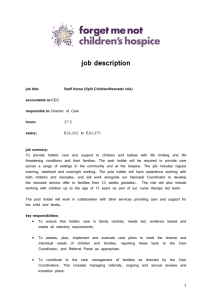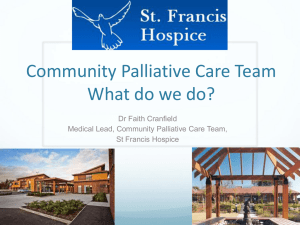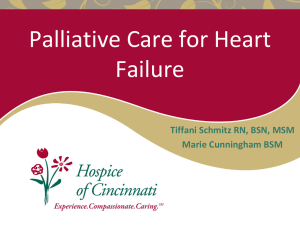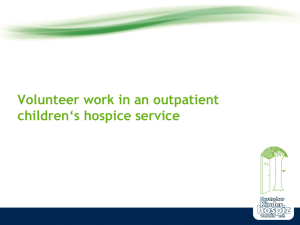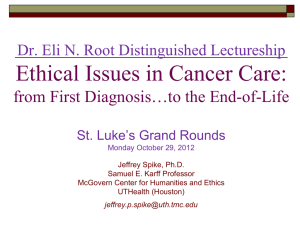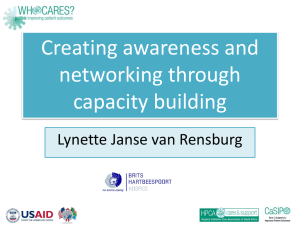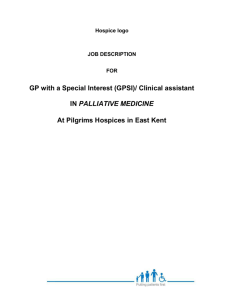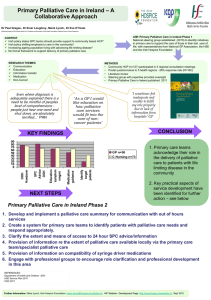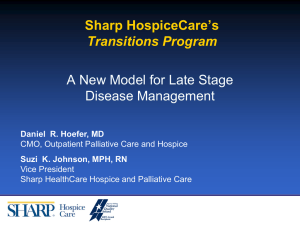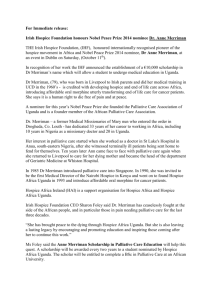How Hospital and Hospice/Palliative Care Organizations
advertisement
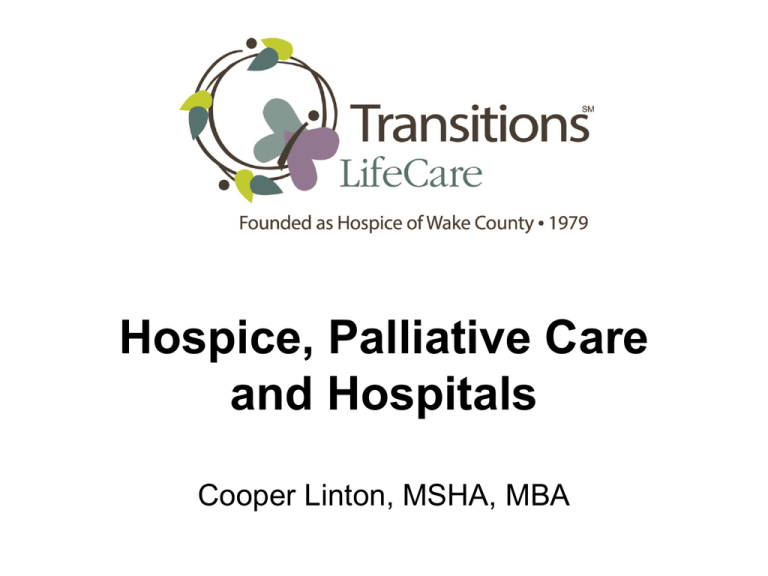
Hospice, Palliative Care and Hospitals Cooper Linton, MSHA, MBA Full Disclosure I went to public school here. Dying is Expensive “Health care expenditures in the United States exceeded $2 trillion in 2006 and are expected to rise rapidly during the next decade. A disproportionate share is spent at the end of life (EOL). Thirty percent of Medicare expenditures are attributable to 5% of beneficiaries who die each year; about one-third of the expenditures in the last year of life is spent in the last month.” http://archinte.jamanetwork.com/article.aspx?articleid=414825 Dying is REALLY Expensive “In 2011, Medicare spending reached close to $554 billion, which amounted to 21 percent of the total spent on U.S. health care in that year. Of that $554 billion, Medicare spent 28 percent, or about $170 billion, on patients’ last six months of life. ” -- June 03, 2013, End-of-Life Care Constitutes Third Rail of U.S. Health Care Policy Debate, by Susan Pasternak / The Medicare NewsGroup Remember the “good old days?” Current Model Hospital = Referral Source Hospice = Referral destination Palliative care = fancy word for hospice Alphabet Soup • MAPs: • ACA • ACOs • NC Medicaid ACOs –HMO –PPO –FFS • VBHC The Market is Going All Bob Dylan on Us! • The times, they are a changing… • We are now being charged with managing risk and cost. • The roles and relationships between us all, they are a-changing. Managing Patients = Reducing Risk = Containing Cost of Care “How we pay is how we play.” --Howard Houser, PhD. Stuck In The Middle? Hospice The only proven risk management model for patient care and cost during the most expensive period of a person’s medical life. Palliative Care The most misunderstood, poorly accessed, improperly motivated, cost effective program that consistently saves money at end of life, but doesn’t get to keep any of it. Hmm…? Two Types of Data • You need data FROM your partners to quantify how you work together. – What are the outcomes of your relationships in real, local, painfully honest numbers? • You need data ABOUT your partners. – What are their real, local, painfully honest numbers about using hospice, home health, etc? Definition of Quality is Changing • Hospice has experience-based outcomes. –FEHC scores –HIS data set –Plus: “Our patients love us” • Palliative care doesn’t have SQUAT! Data You Need • How well does (insert Hospice and/or palliative care organization here) avoid readmissions/emergent care? • How quickly can the provider assist with following patients in the community? • Can they offer Inpatient Hospice care? Hospice/Palliative Care • How does hospice/palliative care partner with nursing homes to keep their readmissions down? • What about assisted living/adult care homes? • From what setting are patients referred? You Can’t Save It AFTER You Spend It • Median length of service in hospice is less than 3 weeks • If most of the money is spent in the last 26 weeks of life, we are 23 weeks too late. Hint: the key is proper identification and use of hospice and palliative care services Just Go With Me on This… Let’s buy a car together. “Choice” or “Ignorant Selection” http://smallbusiness.chron.com/make-profit-used-car-business-486.html Patient Perspective • Expertise in pain and symptom management • Highest quality measures • Training of staff • Depth and breadth of services • Risk/Cost Perspective • Access to inpatient hospice beds • Increased ability to deal with pain or symptom management • Access to full-time, board certified physicians • Lower readmission rates • Lower use of emergent care • New Model ACOs, hospitals, hospice/palliative care, physicians, et al., sit down at table as partners to discuss how to manage patients in the lowest acuity. http://www.rawstory.com/rs/2012/12/21/europol-fearsdeadly-turf-wars-as-biker-gangs-arrive-in-europe/ New Model Discharge planners/Social workers become “matchmakers” between patient/family needs and best available providers. Patients are informed quantitatively and choices are respected. Hospice and palliative care become “patient care managers, and therefore, risk managers” for individuals during the most expensive period of their “medical life”. Questions • Thoughts • Suggestions • Random notions about Alabama

